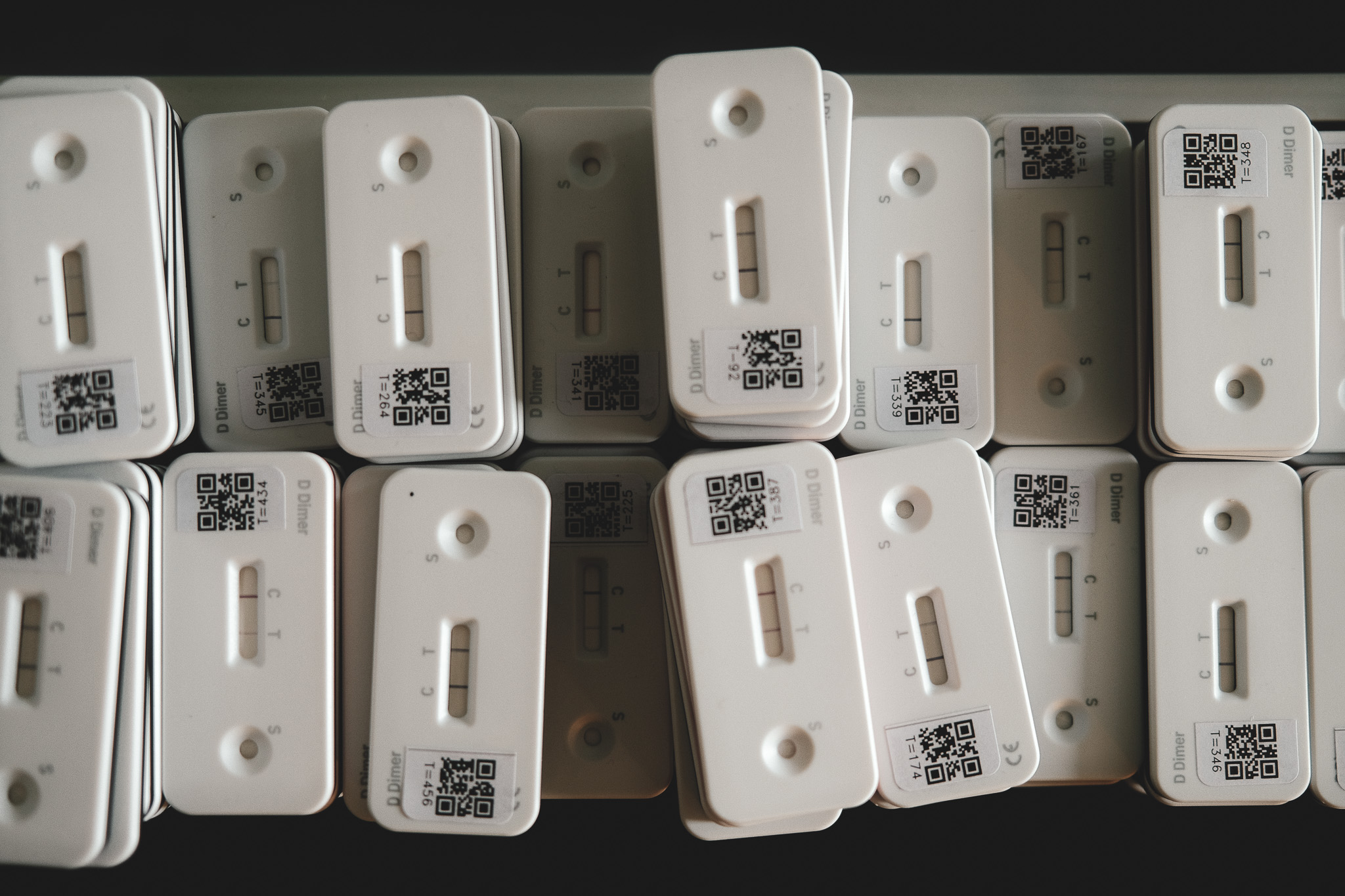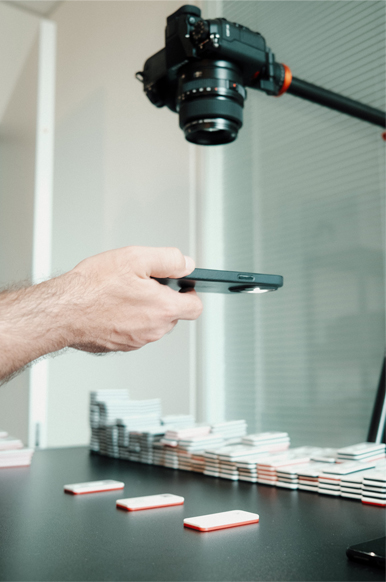Lateral flow assays through time
The past, the present and the future.
- x instant diagnostics
Simple medical tests known as Point-of-Care (POC) diagnostics can be done anywhere, even at home. Many point-of-care test systems are realized as easy-to-use membrane-based test strips, often enclosed by a plastic test cassette.
These tests can be performed and interpreted in a matter of minutes by any general practitioner and only require one drop of whole blood, urine, or saliva. The most popular being COVID-19 rapid tests, pregnancy tests and vitamin D tests.

Therefore, Lateral Flow Assays (LFA) also referred to as lateral flow immunochromatographic assays, are a quick and easy way to detect proteins, antibodies or antigens in a wide range of applications. The test format is based on the migration of a colored line along a nitrocellulose strip/membrane, which is either impregnated or coated with an antigen or antibody. This method of detection is simple, low-cost and rapid, making this technique extremely popular in the medical industry. The pursuit of simplification in manufacturing has led to the spread of their applications into a variety of industries where rapid tests are now required, such as agriculture, veterinary diagnostic, food safety and environmental sciences.
Lateral Flow Assay Test Timeline
- 1956 - Plotz and Singer developed the first latex agglutination assay, forming the technical basis of what later would become lateral flow immunoassay.
- 1959 - Yalow and Berson perfected their measurement technique and named it radioimmunoassay (RIA). A technique for the very precise analysis of proteins such as polypeptide hormones, antigens, antibodies and enzymes.
- 1960 - The enzyme immunoassay (EIA).
- 1969 - Stratis Avrameas, was able to identify different antigens intracellularly in cell suspensions using antibody-enzyme conjugates.It was in the early 1970s when these measuring methods arise. Essentially they distinguish one analyte from a complex sample by utilizing the antibody-antigen interaction.
- 1975 - Southern Blot, a molecular biology technique for identifying a specific DNA sequence in DNA samples, was published by Edwin Southern. Then “Northern blot” – for RNA transfer as well as the “Western blot” – for protein transfer – on nitrocellulose membranes.
- 1976 - ELISA, by Organon Teknika. Soon after the first automated device for performing ELISA was built by Boehringer Mannheim.
- 1985 - First home test. The first pregnancy test was introduced to the market by Unilever. Clearblue was launched in June 1985.
- 2020 - COVID19.
Lateral Flow Assays (LFA) have evolved through time.
We have asked Thorsten Knöller, our Managing Director with more than 7 years in the industry, what are his thoughts about the future of LFAs and this is what he commented:
In the future, we will see more check-up centers. The barrier to get tested probably got lower after people heard about Corona. Besides, check-up centers could offer tests for different health problems to increase the preventive medical system.
With a market value of 12,6 billion dollars in the USA and 2,52 billion Euros in Europe by 2027, LFAs are in more use than ever and increasing year by year. The LFA market still lacks digitization and the demand for result documentation alongside a quantitative read-out is increasing. This is where Flowify AI® or a similar technology will play a key role.


